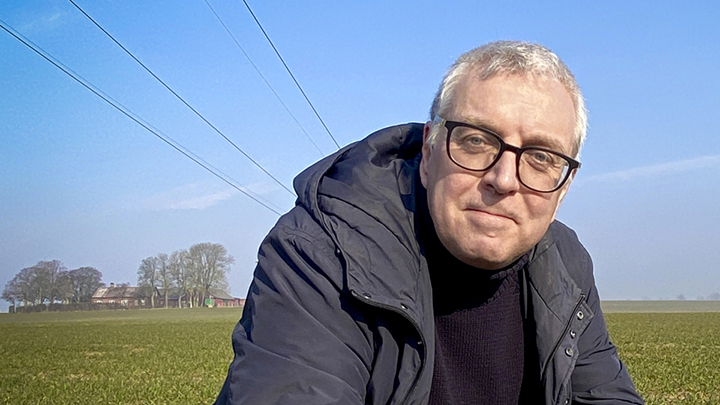AI provides agricultural intelligence
Mathematics Professor Kalle Åström studies the future of agriculture with the help of artificial intelligence (AI). He develops mathematical models to optimise harvests and contribute to climate-friendly agriculture.
Jessika Sellergren – Publicerad den 4 April 2022

Artificial intelligence and agriculture may seem like two different worlds, but not for Kalle Åström. On the contrary, he sees synergies and is keen to bring the two together.
The Professor of Mathematics at the Faculty of Engineering (LTH) feels that he can also be useful out in the fields. Gazing out over the landscape, he explains how AI will play an increasingly important role in the future of farming. The technology contributes to an increased understanding of the interconnectedness of all parts of agriculture and provides clues as to how farming can contribute to reduced climate change.
Better predictions with AI
“The more we know about the whole process around sowing, soil, weather and harvesting, the better we understand agriculture and what parameters affect what. In the end, we will be able to make predictions about how the harvest will turn out and what we should do to make agriculture more climate-friendly,” says Kalle Åström.
About twenty farms in Skåne are participating in an ongoing research project “AI in the service of the climate.” The farmers share information from their activities – data on what they sow, at what time, how the harvest turns out and what they plant next after the first harvest. The data is then entered into a mathematical system that also contains satellite information about the appearance of the arable fields, data from topographical surveys and the slope of the land, chemical analyses of the soil composition and different weather patterns.
“These known facts about the agricultural process are used to model different scenarios. The mathematical model makes it possible to understand why it is better to sow a certain type of crop in a certain type of soil, how climate change affects harvests and how agriculture can reduce its impact on the climate,” says Kalle Åström.
The results take time
One piece of the puzzle in the work against climate change could be storing carbon in the ground. But what does increased carbon sequestration mean for agriculture? And how much soil carbon is released as carbon dioxide into the atmosphere if the ground is ploughed? To get answers to these questions, Kalle Åström and the other researchers in the project are using mathematical models.
“AI can help us map how the soil is affected by differing amounts of sequestered carbon. The technology also shows how previous land use can impact the carbon content of the soil today, and which cultivated crops are better at sequestering carbon than others,” says Kalle Åström.
The research project does not expect quick results – farming has its natural cycles and those take time.
“The work we are doing today may not have an effect for a number of years,” says Kalle Åström.
Modern farming is high tech
Even before the advent of AI technology in the service of agriculture, farmers were already making use of high-tech solutions. An example that Kalle Åström mentions is agricultural machines equipped with GPS, able to spread soil improvers and seeds in precise locations in the fields.
“Farmers have extensive knowledge of how to optimise sowing and harvesting and what nutrients the arable land contains. We researchers can help by managing the farmers’ knowledge and applying it in a mathematical context in order to model the forecasts we need to maintain sustainable agriculture in the future,” says Kalle Åström.
Kalle Åström’s ongoing AI projects
- AI in the service of the climate is funded by Vinnova and is being carried out in a collaboration between Lund University, the Rural Economy and Agricultural Societies, T-Kartor and Sensative. In addition to Kalle Åström, Lund University’s participants are Alexandros Sopasakis and Mikael Nilsson from the Centre for Mathematical Sciences and Lennart Olsson from LUCSUS.
- EU-Adacorsa is focused on the future of forestry and autonomous machines. Lund University is one of 49 partners. The project has a total budget of EUR 42 million.
- WASP is a large national project with funding of around SEK 6 billion from the Wallenberg Foundation, universities and several companies. At the Centre for Mathematical Sciences, there are several sub-projects, including one about self-driving cars.
- ELLIIT is a Strategic Research Area (SRA) project about the future of IT and communication. The project recently received new funding and the participating universities are Lund University, Linköping University, Blekinge Institute of Technology and Halmstad University. The Centre for Mathematical Sciences is also running sub-projects on computer vision and positioning.
- AI Lund is a network for researchers and partners who all have AI in common.
